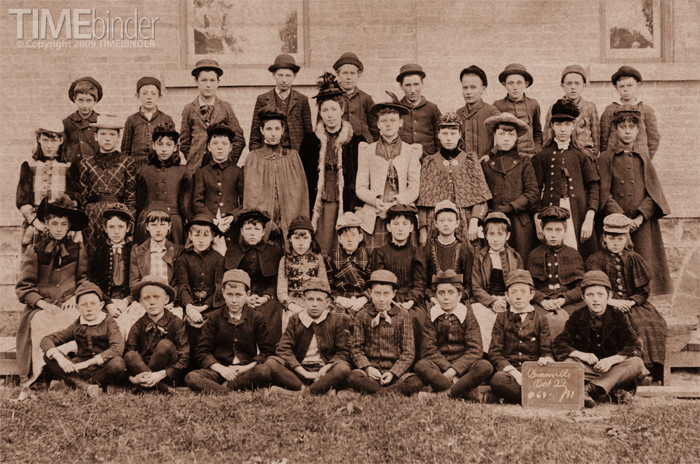Gold Standard Class Photo
 Wednesday, September 23, 2009 at 11:10AM
Wednesday, September 23, 2009 at 11:10AM 
The general quality of this photo is not above average, but it is worth its weight in gold for fashion alone. I find class photos interesting in themselves, but to have one that is reliably dated as this one is on the slate (1891), and to have the sheer variety of clothing styles represented, fills in gaps in accurate dating for children's photos (published examples on children are virtually nonexistent).
I have found at least three communities historically noted as Grunville – KY, DE, ME – but just try to find even one on a current map or discover any relevant information about those places; either they no longer exist, have been renamed or are now too small for note. I think it might be Kentucky since there was once a Grunville and a Grunville Female College there in the 19th century; the place name may have been changed to Granville at some point in time.
The other remarkable thing here is the quality of clothing exhibited, perhaps indicating that it is a private institution, or if it is a public school it is an unusually wealthy community (no other photo of the kind in my collection even comes close in that regard). Everyone wears a hat and there are hardly any alike (caps with bills are popular with girls, a revelation to me for the period); capes or coats with capes are also popular; most of the boys wear short pants with stockings. Some of the clothes are exceptional examples of fashion, perhaps not what they would wear to school every day (the girl farthest left, first row seated, is one standout – and her expression may show she is very aware of that). I see several girls who have such similar features that I imagine they are close relations. The third from the right in the row of seated girls has a benevolent little face that I think could indicate a merry and likable personality, she may have been a bit of a tomboy.
The students appear to be within a year or two of the same age, but as is almost always the case the girls look more mature than the boys (and certainly there were greater cultural expectations of behavior for even young females at the time, especially in well-to-do families).







